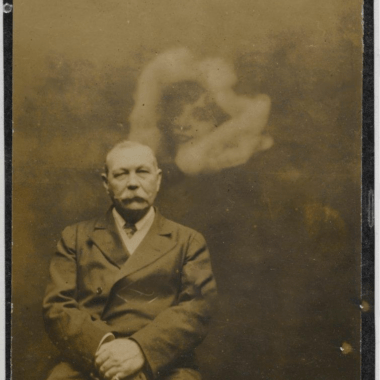- The history of New Year's Eve
- Traditional New Year's Eve customs
- Culinary traditions
- The significance of the Raunächte
- Concluding thoughts and summary
Every year on December 31, you probably prepare for the big New Year's Eve celebration without giving much thought to the deeper meaning of New Year's Eve traditions. The fireworks, the lead pouring and the champagne at midnight - all these customs have a centuries-old history.
From Germany to Austria to international celebrations - the way people welcome in the New Year is as diverse as it is fascinating. Have you ever wondered why we actually celebrate New Year's Eve and what the meaning behind the individual rituals is? In this article, you will discover the exciting world of New Year's Eve customs, their historical roots and the special traditions in German-speaking countries.
1. the history of New Year's Eve
The history of New Year's Eve goes way back into the past. When you hear the name "New Year's Eve" today, you probably immediately think of fireworks and festivities. However, the origins of this special day are closely linked to historical events.
Origin of the name Silvester
The name "Silvester" comes from the Latin word "silva" (forest) and means "forest dweller". The connection to the end of the year goes back to Pope Silvester I. who died in Rome on December 31, 335. As the first pope to be recognized by the Roman Empire, he shaped an important era: under his leadership, the empire changed from a policy hostile to Christians to one that was more Christian-friendly.
Pre-Christian roots of New Year's Eve customs
Long before the day was given the name New Year's Eve, the ancient Romans were already celebrating the end of the year. This happened for the first time 153 BC.when the beginning of the year was moved from March 1 to January 1. The Germanic tribes celebrated the "Yule festival" at the winter solstice, when they celebrated the death of the old year and the birth of the new one.
Development of traditions in German-speaking countries
The current form of the New Year's Eve celebration developed through the Gregorian calendar reform In 1582, the last day of the year was definitively set as December 31. Interesting for you to know: The early Christians initially celebrated either Epiphany (January 6) or the Feast of the Nativity (December 25) as the beginning of the year.
The traditions that have been preserved over the centuries are particularly remarkable:
- Dispelling evil spirits through noise (today through fireworks)
- The first documented fireworks display in Germany in 1506
- The development of church New Year's Eve services since 1776
These customs show how pre-Christian and Christian traditions have blended into what you know today as modern New Year's Eve celebrations.
2. traditional New Year's Eve customs
Traditional New Year's Eve customs characterize your celebrations at the turn of the year, even if you may not always be aware of it. These customs combine old traditions with the modern spirit of the times.
Lead casting and other oracle rituals
A popular custom for a long time was lead casting, which was already practiced by the Romans. However, the sale of lead-containing casting sets has been banned since 2018, as they significantly exceed the EU limits. Today, you can use wax or tin as an alternative - the interpretation of the resulting figures remains just as exciting.
Fireworks and noise traditions
Fireworks have a particularly long tradition: the first documented fireworks display in Germany was set off in 1506. Today, it is a million-dollar business - in 2019, Germans spent around 122 million euros on fireworks. But the custom goes far beyond the spectacular: even the Germanic tribes wanted to drive away evil spirits with noise and lights.
Lucky charms and their meaning
At the turn of the year, you might also give small lucky charms as gifts. Each symbol has its own story:
- The Chimney sweep used to bring good luck, because a working chimney was essential for survival
- The four-leaf clover is intended to protect against misfortune when traveling
- The Pig was considered a sacred animal and a symbol of wealth in the early Middle Ages
- The Ladybug with seven points is considered a special messenger of luck
Please note: The night's rest generally also applies from 10 p.m. on New Year's Eve, even if an "extended tolerance limit" is practiced in reality. Special care must be taken with fireworks - they are prohibited in the immediate vicinity of hospitals, churches and retirement homes.
3. culinary traditions
The culinary traditions at the turn of the year are as varied as they are meaningful for your New Year's Eve celebrations. What you eat and drink should not only taste good, but also bring luck and prosperity for the new year.
Traditional New Year's Eve dishes
If you are looking for a convivial New Year's Eve dinner Fondue and Raclette the most popular options in Germany. These dishes are particularly suitable for a long, cozy evening with family and friends. In Denmark you traditionally enjoy nytårstorsk (cod) with kale, while the French celebrate the evening with champagne and oysters.
Symbolic dishes for happiness and prosperity
Certain foods are said to bring you special luck in the new year:
- PigAs a traditional lucky charm, be it a roast pig or a marzipan pig
- Lentils and pulses: Their shape is reminiscent of coins and promises wealth
- Fish: Especially the carp, whose scales are said to bring prosperity in the wallet
- Sauerkraut: The more in the pot, the more money in the new year
Regional specialties at the turn of the year
In Austria, sweet pastries such as doughnuts, foam rolls and apple strudel are part of the traditional New Year's menu. The Spanish eat twelve grapes at midnight - one for each chime of the bell - which is said to bring good luck for each month of the coming year. In Italy you can enjoy Cotechino con lenticchi - Pork sausages with lentils, whereby the amount of lentils eaten is said to determine future wealth.
Of particular interest is the Danish tradition of Crane saccagea tower-shaped marzipan cake that sweetens the transition into the New Year. Many families also make a Midnight soup served - perfect for warming up again after the fireworks.
4 The significance of the Raunächte
Between the festive days of the turn of the year, you will experience a special time: the twelve nights of the moon. This mystical period between Christmas and January 6th holds deep meaning and centuries-old traditions.
The mythology of the twelve nights of smoke
The Raunächte originated from the difference between the lunar and solar years. The lunar year has 354 days, while the solar year has 365 days. During this "time outside of time", it was believed that the boundaries between the visible and invisible worlds were particularly thin. You can use this time to reflect on the past year and prepare for the year to come.
Traditional incense rituals
Incense burning is one of the most important rituals of the Raunächte. The following herbs are traditionally used:
- Frankincense and myrrh for purification
- Juniper for protection
- Fir resin for positive energy
- Mugwort for spiritual clarification
In Catholic families, the head of the family leads the incense procession while all family members pray the rosary. Especially important: burn incense in all corners of your home to completely dispel negative energies.
Customs in the Alpine countries
In the Alpine regions, you will encounter special traditions such as the Perchten runs. These take place on the last Raunacht (January 5/6). The mythical woman Percht appears with her entourage to drive away evil and sweep out the old year. People dress up in scary masks and fur capes, which can cost between 700 and 1,000 euros.
Another tradition is the Wish list ritualYou write 13 wishes on small pieces of paper. From December 24th, you burn one piece of paper every day. The last remaining wish must be fulfilled by yourself. Also note the old custom of not hanging up laundry - according to popular belief, this could be used as a shroud.
5 Concluding thoughts and summary
New Year's Eve combines centuries-old traditions with modern festivities to create a unique end-of-year celebration. The diverse customs - from symbolic fireworks and culinary traditions to the mystical Raunächte - make this time something very special.
These traditions clearly show that New Year's Eve means more than just a lively party. They not only celebrate the transition into the new year, but also continue customs that have given people hope, happiness and confidence for centuries.
Make conscious use of the time between the years for your own personal rituals. Whether it's traditional lead casting with modern materials, a festive raclette dinner with the family or a contemplative smoking ceremony - each of these customs helps to bid a dignified farewell to the old year and welcome the new year with hope.











